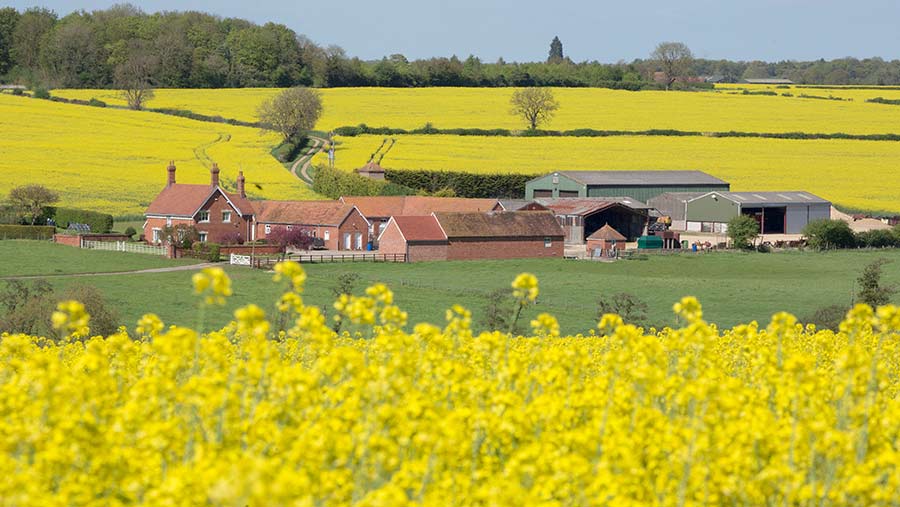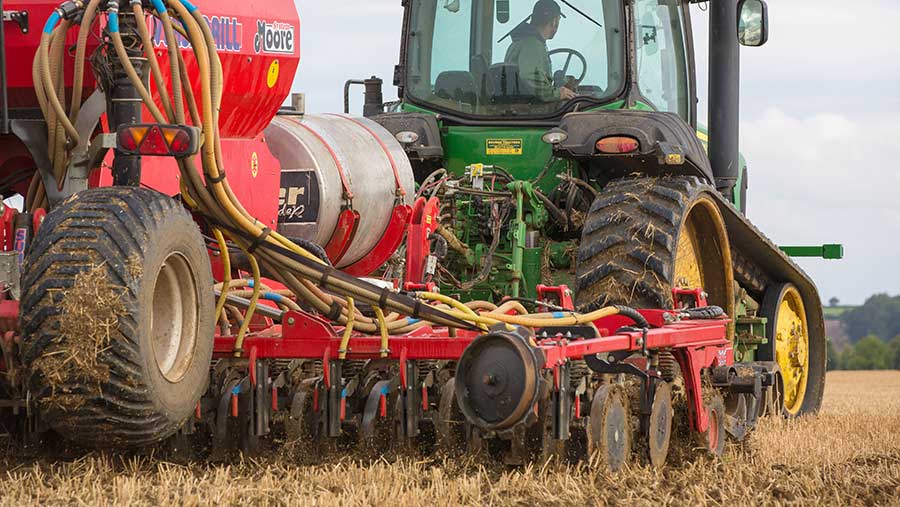Oilseed rape area is set to fall as growers lose faith
 © Tim Scrivener
© Tim Scrivener The area of oilseed rape drilled this summer is likely to drop as growers fall out of love for the crop. The only unknown is how large the decline will be.
A dry autumn and swarms of cabbage stem flea beetles, followed by larvae damage, has seen more than 10% of the crop being pulled up, but alternative crops for next season are few and far between.
Next season’s rapeseed area will depend on yields at harvest to sustain growers’ interest in a crop that is already expensive to grow. The threat of imports is also keeping a lid on prices, with oilseed rape trading at £300/t ex-farm for harvest.
Owen Cligg, trading manager at co-operative United Oilseed, argues there is still a good market for rapeseed, such as for biodiesel, while there are price premiums available for specialist oils to support the future of the crop.
“Even at current prices and a yield of 3t/ha, the crop looks better than pulses and other possible break crops,” he says.
See also: Oilseed rape area to shrink as growers weigh up alternatives
AICC survey- drilling intentions for summer 2019
- National crop could be down 18%
- Southeast England crop could be down 25%
Twin effects
He forecasts that the crop has shrunk from just over 590,000ha drilled to about 520,000ha, as many crops have been ripped up after the twin effects of drought and flea beetle attacks.
Estimating an average yield of 3.3t/ha, this would give a national crop of 1.7m tonnes, down from the 2m tonnes seen in the previous two years.

© Tim Scrivener
Grower enthusiasm for the crop is likely to depend largely on final yields, as a 4t/ha crop at £300/t will give a good profit margin and may help to limit the expected fall from last summer’s crop of 590,000ha.
Traders argue that there is still good demand for rapeseed from the biodiesel market, and for those growing premium food-quality high-oleic, low-linolenic (Holl) varieties and high-erucic acid (Hear) rapeseed for industrial uses.
However, rapeseed prices are being capped by the threat of imports, with harvested oilseed rape being quoted at £300/t ex-farm and £310/t ex-farm for November.
Larvae problems
As flea beetle larvae problems have spread north into Lincolnshire and west into Wiltshire from their East Anglian hotspot, it has sparked a lot of talk of growers giving up on rapeseed.
Paul Taylor, national grain and regional seed manager at agronomy group Agrii, says oilseed rape can be £200/ha more expensive to grow than alternatives such as winter beans and winter oats, and with good contracts, these crops can start to look attractive.
However, oilseed rape can still stack up if growers focus on good agronomy using vigorous hybrid varieties, starter fertiliser at drilling and early sowing dates to counter the larvae problems, he adds.
“There are still a number of positive for oilseed rape growers in term of rotation and a good early entry for winter wheat,” says Mr Taylor.
The Association of Independent Crop Consultants (AICC) conducted a survey to gauge growers’ reactions. If respondents’ views were acted on, this would result in an 18% fall in the crop area this summer to less than 500,000ha.
The survey pointed out that south-east England would see the biggest negative reaction to oilseed rape, with the area down as much as 25% as growers despair of the crop after drought and larvae damage.
Area of winter oilseed rape June statistics – Defra |
|
| 2016 | 579,000ha |
| 2017 | 554,000ha |
| 2018 | 593,000ha |
More optimistic
Mark Shaw of major oilseed rape breeder Dekalb is understandably more optimistic for the future of the crop, as he argues it can be grown sustainably and in Britain, rather than resorting to importing vegetable oils.
He urges growers not to give up on the crop after a “perfect storm “ of drought and flea beetles hitting the crop, and his group is working on a package to give growers the latest advice and share the financial risks of establishment for next season.
“We need to be sharing knowledge, as some growers saw good establishment and their crops got away well,“ says Mr Shaw, who is the company’s marketing manager for north-west Europe.
He advises growers to wait for a good drilling window, use fertiliser at drilling, then roll and also use vigorous growing varieties that can grow away from the pest in the autumn and the spring.
Dekalb, now owned by Bayer, has a leading 27% share of the oilseed rape market with varieties such as Extrovert, Exalte and Expansion, together with the leading herbicide-tolerant Clearfield variety Imperial.
Price premiums
Mr Shaw adds that with the price premiums – such as a £25/t bonus in the Holl sector – oilseed rape can still be a profitable crop.
Some evidence suggests later drilling in the first week of September may avoid the main flea beetle migration, but he is hoping to share with growers all the latest advice before drilling the next crop this summer.
However, in other areas of Europe, oilseed rape sowings could be up, as seed traders expect the Danish area to edge up to 150,000-165,000ha from a current winter crop in the ground of 150,000ha.
The country saw adequate rain last autumn and low cabbage stem flea beetle numbers, which were controlled with one or two well-timed insecticide sprays.
Further north, Sweden’s winter rapeseed area is expected to be largely static at 100,000ha, after three years of small increases. There is also expected to be 5,000-10,000ha of spring-sown oilseed rape.

